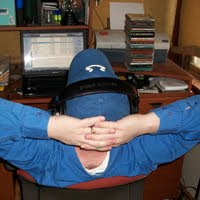I have always wanted there to be a harpsichord renaissance in music. The sound is unmistakable, and it adds a degree of class to any song. For example, Tori Amos’s CD Boys for Pele features Tori banging away on a harpsichord during several songs.
The harpsichord was invented sometime in the Medieval era. The first reference to the instrument was in 1397 in a written account by a man in northern Italy. It was light weight and carried a powerful sound. However, with all good things, the time of the harpsichord came to an end in the 18th century. The newly created piano pushed the harpsichord from its rightful place as the keyboard of choice. The harpsichord had a bit of a revival in the 20th century in England during the Baroque Pop era.
After the ‘70s, the sound of the harpsichord seemed to disappear from the rock scene. If a band would use it, it was just background noise, but never the feature.
In 1981, The Stranglers were trying to redefine their sound during the decline in British punk. Their 1981 album, La Folie, attempted to relate to various forms of love. The first release for the band gave them the commercial and critical resurrection that they, and record label EMI, were looking for.
“Golden Brown” features a harpsichord along with an organ at the beginning. The song, which is a waltz with 3/4 meter for most of the song, delivers a timeless melody.
The meaning of the lyrics has ranged from heroin use to a song about toast. One of the more logical theories is that the song was about lead singer (and composer of the song) Hugh Cornwell’s girlfriend, who was from the Mediterranean and had golden brown skin. That would fit in with the concept of the album (which translated means “The Madness”).
Golden brown texture like sun
Lays me down with my mind she runs
Throughout the night
No need to fight
Never a frown with golden brown
Lays me down with my mind she runs
Throughout the night
No need to fight
Never a frown with golden brown
This song was introduced to a new generation (and most of America) with its inclusion to the 1999 film Snatch.
Truthfully, the meaning behind this song is secondary to me. It gives me my musical-geek-like fix by mixing 16th century instrumentation with 20th century rock n’ roll. Here’s to hoping more songs like “Golden Brown” are written.
Share |









2 comments:
Hi Ian, just read your piece 'Return of the Harpsichord', with interest.
I know Hugh Cornwell likes to create the impression that he wrote
'Golden Brown', and he did..................the words/lyrics that is. Whereas
the /*song*/ was written by Dave Greenfield and Jet Black, moreover, this can be confirmed on Wikipedia.
Regards,
Ava R.
Touché, Ava. Perhaps “composer” might have been the wrong word to use. I wanted to focus that part of the story on the lyrics, which we agree was written by Cornwell. I didn’t intend to take anything away from Greenfield and Black…which their work is the main reason why I love the song.
Post a Comment